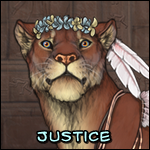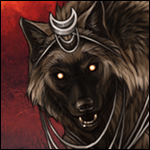|
1 |
|
|---|---|
| Posted by | Let's Talk Lethals |
 Mouse (James, he/him) (#146549) Bone Collector View Forum Posts  Posted on 2022-03-24 04:47:40 |
I noticed that there seems to be little onsite information about the facts surrounding lethally mutated cubs and their real-life counterparts. It's time to change that! I'm James, and I'm going to share what I know about lethals. Please note: I am not a medical professional. This information comes from my research on real life medical cases and special interest in medical documentaries. This thread is not intended to be taken as medical advice, and I do not claim to be a qualified physician. If you need more information, please do your own research. Feel free to fact check me. I do not know everything. I purely want to share my interest with others, and help people to understand their lethally mutated cubs. This thread WILL NOT contain real life photographs or graphic images. If I need an image to explain something, I will draw it in a simple, unrealistic style to help make this accessible to people who are squeamish. HOWEVER, this thread WILL contain descriptions of real life medical afflictions. Please read on at your own risk. I'll be updating this post as and when I get the chance!  3 players like this post! Like? 3 players like this post! Like? Edited on 24/03/22 @ 05:43:52 by Mouse (Patches skyward) (#146549) |
|
Mouse (James, he/him) (#146549) Bone Collector View Forum Posts  Posted on 2022-03-24 04:47:45 |
Harlequin IchthyosisHarlequin ichthyosis is the condition I know the most about, so I'll start here.  Harlequin Ichthyosis is a rare genetic disorder caused by a mutation in the ABCA12 gene. This gene is responsible for a protein which is an important part of normal skin development. Children (and cubs) with the condition face skin abnormalities which have often lethal complications. Harlequin ichthyosis has reported occurrences in both humans and animals, though from what I can find it seems to be referred to as Ichthyosis Fetalis in cattle (and perhaps other animals). As far as I can tell, there are no reported instances of animals surviving Harlequin Ichthyosis - though take this with a grain of salt, as the majority of my research has been on humans. Human infants with Harlequin Ichthyosis have a lower mortality rate, which seems to be gradually decreasing as we see improvements in medical technology and understanding. At birth, a child with Harlequin Ichthyosis will present with large, plate-like forms of hard, tight, white skin, separated by pink or red fissures. The lips and eyelids will be everted (inside out), hence the red appearance. This is due to the skin tightening excessively. They may struggle to move. The skin constricts the infant, which can cause breathing problems. Additionally, children with Harlequin Ichthyosis have trouble regulating their body temperature, have abnormally high water loss through the skin, and are prone to infection. This is because the skin forms a barrier between the body and the outside world in a healthy individual, but in a Harlequin Ichthyosis sufferer this barrier is disrupted. This, along with difficulty moving and feeding due to the tightness of the skin, often results in life-threatening complications. In Lioden, the lethal factor is the constriction of the chest preventing breathing, but in real life this would be paired with dehydration, malnutrition, unstable body temperature, and susceptibility to infections. Infants with Harlequin Ichthyosis require immediate intensive care to have a chance at survival. Many do not survive the first week of life - with immediate neonatal care, mortality is around 50%. Children who do survive will eventually shed their plate-like skin, leaving them with raw, red, scaly skin. The skin on a Harlequin Ichthyosis sufferer grows too quickly, and needs to be painfully scrubbed off daily to prevent infection. This is an incredibly difficult process, and sufferers are incredibly brave. Visual differences of a person with Harlequin Ichthyosis include red, thick skin which does not stretch and will often crack, a lack of hair, and abnormally shaped eyelids, nose, mouth, and ears (caused by the tightness of the skin). There are reported cases of Harlequin Ichthyosis causing loss of digits, due to restricted blood flow leading to necrosis in the newborn stage, and many HI sufferers will experience hearing loss due to the build up of skin inside the ears. Those who survive the first few weeks with Harlequin Ichthyosis have a decreased life expectancy due to the complications of the disorder. Most live to their teens or early 20s. The condition is recessive, and to my knowledge most people with the condition do not have children. However, a woman with Harlequin Ichthyosis named Stephanie Turner had two children in 2013, neither of whom have the condition. The children may have the potential to pass the condition on though - should they have children of their own - as there is a chance that they are carriers of the mutated gene. These genetics do not come into play on Lioden - any lion/ess is equally likely to have a cub with Harlequin Ichthyosis, and lions who have had a cub with the condition do not appear to have any greater chance of passing the condition on again. It's purely down to random chance. Fun fact! On Lioden, the condition is misspelled as Harlequin Ichtyosis, missing the second "h". The reason for this is unclear, and I'm unsure whether or not it was intentional. What would a survivor look like on Lioden? As mentioned above, I can't find any reported cases of an animal surviving with Harlequin Ichthyosis. As such, this is purely speculative and is based on human survivors.  Having lost the plates of skin entirely, the theoretical surviving Harlequin Ichthyosis cub now has raw, red skin. This must be intensively groomed daily to remove the fast growing skin buildup and prevent cracking and infection. Our cub's skin has few wrinkles, due to its thick and inelastic nature, and he still has no fur. His teeth and eyes develop normally, but his ears are fused to his head by tight skin, his hearing is affected by skin buildup within his ears (he may eventually go deaf entirely, due to a lion's inability to remove material from the ears), and his claws are abnormal. As there are no cases I can find in animals, I can't be certain how the claws would present. Human ichthyosis survivors have thick fingernails, which may present similarly to overgrown claws in an Ichthyosis cub, however I do wonder how the tight, thick skin and limited digit dexterity would affect the retractable nature of a feline's claws - it's very possible that he may never be able to extend his claws as other lions do. It is also possible that an Ichthyosis cub would have lost some of his toes or part of his tail, due to restricted blood flow. However, I think it is more than likely that lion survivors would not have experienced this, as the wounds would leave them even more susceptible to infection. A surviving HI cub would also have to compete with decreased mobility, dehydration, and disregulated body temperature, all of which would be increasingly difficult in the hot climates lions are native to. He would likely never be able to patrol, hunt, or reproduce. Even with luck on his side and the care of his pridemates, it's unlikely that our cub would see much of his adolescence.  6 players like this post! Like? 6 players like this post! Like?Edited on 25/03/22 @ 08:11:37 by Mouse (Patches skyward) (#146549) |
|
Mouse (James, he/him) (#146549) Bone Collector View Forum Posts  Posted on 2022-03-24 04:47:49 |
Lipomatosis According to my research, "Lipomatosis" seems to be an outdated term, at least when referring to animals. Rather, most journals refer to the condition as "Fat Necrosis". Even more surprising is that it seems that the general consensus says lipomatosis/fat necrosis in animals is most often due to diet or trauma, rather than being congenital as it is in Lioden. I am still researching, however, and will return with updates when I can. Lipomatosis is the development of benign, fatty tumors. This seems to be mostly abdominal. In mild cases, it may not be noticed at all - one source stated that it's often accidentally discovered after the (unrelated) death of the animal, and some sources state that in some cases, the condition spontaneously resolves itself. Lipomatosis cubs on Lioden have no such luck. Their condition is severe, with significant visual and apparent internal tumors. In severe conditions like these, the tumors compress the internal organs, particularly affecting the digestive system. This results in depression, anorexia, and death, as the sufferer will become malnourished and/or experience intestinal blockages.  3 players like this post! Like? 3 players like this post! Like?Edited on 24/03/22 @ 17:17:27 by Mouse (Patches skyward) (#146549) |
|
Mouse (James, he/him) (#146549) Bone Collector View Forum Posts  Posted on 2022-03-24 04:47:52 |
Sirenomelia  1 player likes this post! Like? 1 player likes this post! Like?Edited on 24/03/22 @ 06:50:48 by Mouse (Patches skyward) (#146549) |
|
Mouse (James, he/him) (#146549) Bone Collector View Forum Posts  Posted on 2022-03-24 04:47:55 |
Extra Limbs Polymelia  1 player likes this post! Like? 1 player likes this post! Like?Edited on 27/03/22 @ 13:54:59 by Mouse (Patches skyward) (#146549) |
|
Mouse (James, he/him) (#146549) Bone Collector View Forum Posts  Posted on 2022-03-24 04:47:58 |
Two Heads Diprosopus  1 player likes this post! Like? 1 player likes this post! Like?Edited on 27/03/22 @ 13:55:55 by Mouse (Patches skyward) (#146549) |
|
Mouse (James, he/him) (#146549) Bone Collector View Forum Posts  Posted on 2022-03-24 04:48:02 |
Conjoined Cubs  1 player likes this post! Like? 1 player likes this post! Like?Edited on 24/03/22 @ 06:54:06 by Mouse (Patches skyward) (#146549) |
|
Mouse (James, he/him) (#146549) Bone Collector View Forum Posts  Posted on 2022-03-24 04:48:05 |
Cyclopia  1 player likes this post! Like? 1 player likes this post! Like?Edited on 24/03/22 @ 06:55:06 by Mouse (Patches skyward) (#146549) |
|
Mouse (James, he/him) (#146549) Bone Collector View Forum Posts  Posted on 2022-03-24 04:48:09 |
Cleft Palate  1 player likes this post! Like? 1 player likes this post! Like?Edited on 24/03/22 @ 06:56:03 by Mouse (Patches skyward) (#146549) |
|
Mouse (James, he/him) (#146549) Bone Collector View Forum Posts  Posted on 2022-03-24 04:48:12 |
Deaf (and Blind)Blindness may not be a lethal mutation in Lioden, but I'll share some insight on the reason for that - and why it might have been under different circumstances.   2 players like this post! Like? 2 players like this post! Like?Edited on 24/03/22 @ 07:02:00 by Mouse (Patches skyward) (#146549) |
|
Mouse (James, he/him) (#146549) Bone Collector View Forum Posts  Posted on 2022-03-24 06:18:56 |
Harlequin Ichthyosis complete - feel free to correct me if I've made any mistakes! I'm not a professional, and I'm still learning! Also, would anyone be interested in resource links to do research of their own?  2 players like this post! Like? 2 players like this post! Like? |
|
Jewles (#347206)
Notable Lion View Forum Posts  Posted on 2022-09-24 09:35:50 |
|
Jag (#229080)
Total Chad View Forum Posts  Posted on 2022-10-18 18:33:47 |
|
Lunar (#458398)
King of the Jungle View Forum Posts  Posted on 2024-01-08 07:47:43 |
Very helpful. Was trying to find info and I think there's a term when each cub will die (sad noises) Also scary that you can't freeze cubs with a jellyfish from the oasis..wish you could.  0 players like this post! Like? 0 players like this post! Like? |
|
🪻casper (#282338)
Maneater View Forum Posts  Posted on 2024-01-08 08:01:14 |
very interesting thread! I especially like how you show what a survivor may look like. I'll be watching closely for updates   0 players like this post! Like? 0 players like this post! Like? |
1 |
|---|
Memory Used: 638.03 KB - Queries: 0 - Query Time: 0.00000 - Total Time: 0.00401s
 Report
Report




